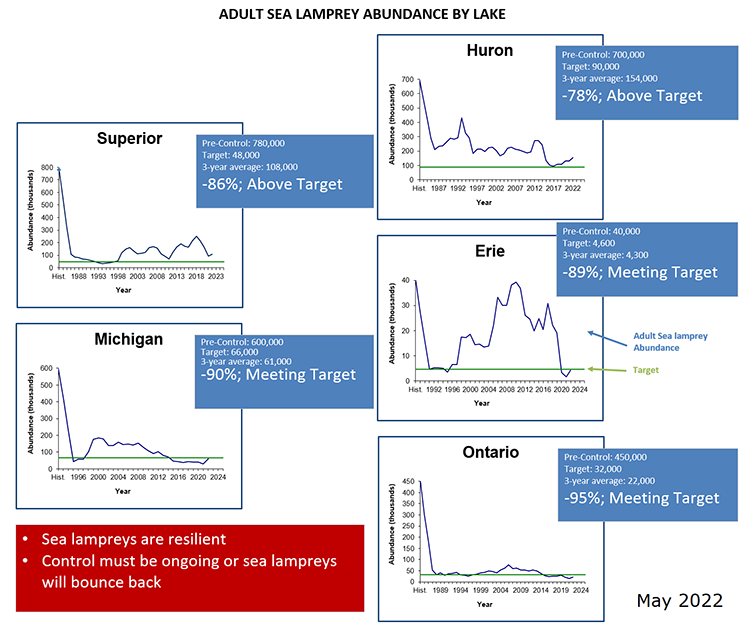Status of Sea Lamprey
Part of a successful sea lamprey control program is monitoring adult sea lamprey abundance in each lake and sea lamprey impacts on fish; the sea lamprey marking rate on lake trout, their preferred host, is used to assess impacts on fish. To better understand the relationship between sea lamprey abundance and marking rates on lake trout, the number of lake trout also needs to be assessed (i.e., the number of lake trout can influence the marking rate).
Sea lamprey populations are monitored by generating an adult sea lamprey abundance index for each lake. The index is calculated by assessment crews who capture migrating adult sea lamprey in index streams with traps during the spring and early summer. A mark-recapture study is conducted on each index stream to generate a population estimate. Individual index stream population estimates are then summed to create the lake-wide adult sea lamprey abundance index. Whole-lake adult sea lamprey abundance estimates can be calculated by multiplying the lake-wide index by a lake-specific conversion factor. Lake trout marking and abundance data are collected annually from management agencies around the Great Lakes to generate lake-wide marking rates and population estimates.
Success in meeting targets for both the adult sea lamprey abundance index and sea lamprey marking rates on lake trout is determined by assessing the 3-year average index or marking rate compared to the targets. There are no targets for lake trout abundance in the context of reporting sea lamprey status. The trend of the adult sea lamprey abundance index, sea lamprey marking rate on lake trout, and lake trout abundance is determined by the direction of the slope over the past five years. Single year point estimates fluctuate and can have wide error bars, thus the focus on 3-year averages and 5-year trends.
Below is a table that summarizes the current status of each metric and a figure that highlights the whole-lake adult sea lamprey abundance estimates for each lake.


The links below provide a more detailed status report on sea lamprey control for each lake. Additionally, an interactive application is available to visualize the sea lamprey status data.

